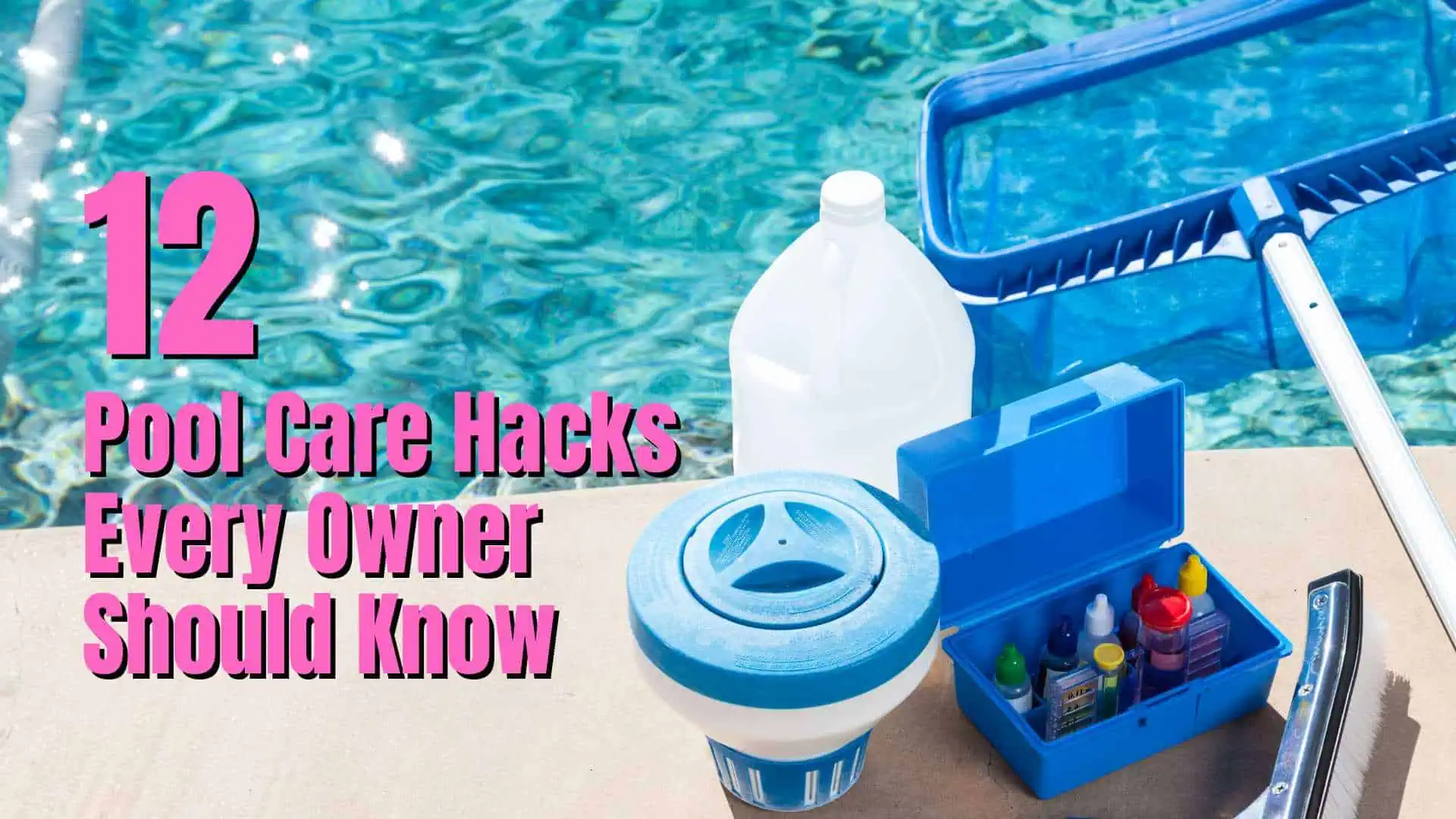There is no remedy for sweltering hot summer days quite like a refreshing dip in the pool. However, most of the time, you probably dive right into the chemically-infused water without inspecting the pH levels. If you are swimming in a pool with a high pH balance, you could be posing a potential threat to both your body and your pool.
When pH is too high (above 7.8) it becomes too alkaline, and this decreases the effectiveness of chlorine to keep the water clean and free of bacteria. If this happens then problems such as skin rashes, scaling on pool equipment, algae growth and cloudy water can occur if high pH levels are left untreated. Recommended pH levels are between 7.3 and 7.6 to maintain clean and safe water.
Luckily, you can take precautionary methods and solutions to prevent high levels of pH in your pool’s system. How do you get started? Read on to learn all about what happens if your pool’s pH gets too high and how to maintain your pool’s pH properly.
Ph In Pool Too High? If the pH level in your pool is too high, it can lead to various issues such as eye and skin irritation, cloudy water, and reduced effectiveness of sanitizers. To lower the pH, you can add a pH reducer or use muriatic acid, but be cautious and follow proper safety guidelines. Regularly test and adjust the pH to maintain a balanced and enjoyable swimming experience.


What can happen if your pool pH too high?
As stated above, the higher the pH, the more alkaline or basic a pool’s water is. High alkaline water can affect not only your body while you swim but also your pool system as well. Both our bodies and our pools work to operate on a delicate pH system. Once that system gets off balance, the effects are negative and immediate.
Some effects on the body include:
- Skin rashes
- Red eyes
- Dry skin
Then, there are the effects on the pool system:
- Cloudy water
- Scaling on pool equipment
- Aging of pool liner
- Clogged filters
These are the consequences of elevated pH levels and should be accounted for when adding various supplements to your pool water. It is important to check your pool’s pH balance regularly to avoid harm to yourself and your pool system.
Is it safe to swim with high pH?
Now that you understand the risks that tie along with high pH levels, the question that remains is whether or not it is safe to swim.
Experts suggest steering clear of water with a pH over 7.6 due to the damage it could cause to the body. If the water is leaning on the alkaline side, this raises the potential for chlorine, a bacteria destroyer, to stop performing its job. Bacteria and algae growth can be harmful to the body when it enters one’s system.
Physical effects can be seen as well.
- Skin irritations (rashes, burns)
- Dissolving skin and hair oils (dryness, itchiness)
- Swollen eyes (redness, burning)
These effects can be very uncomfortable. Overall, it is best to avoid swimming in your pool until you are able to lower the pH to a safe level.
What causes high pH in pools?
The most common reasons why you may have high pH are:
- Too much chlorine
Adding granular chlorine can have the effect of raising pH when shocking the pool - Too much pH plus chemicals added
If your pool pH levels are low then the solution is to add pH plus chemicals to raise it but it is possible to overdo this and end up with high pH. - Algae
If algae is present it consumes CO2 and that in turn increases pH levels
How to lower pH levels
Although having pH too high in pool water might be causing you grief, you can fix it quite easily.
Muriatic acid and sodium bisulfate are the most often used chemicals to reduce the pH levels in a pool. Both are known as pH reducers designed for swimming pools and are extremely effective.
For full details of how to use these to lower the pH then please read my article How to lower pH in a pool easily which will give a full explanation.
Muriatic acid
Muriatic acid is very powerful as it is a diluted version of hydrochloric acid. The substance comes in a liquid form, so you should take precautions when handling it.
You can purchase Muriatic acid on Amazon – Acid Blue Muriatic Acid
Sodium bisulfate
Sodium bisulfate is easier to add and safer to handle than muriatic acid. It comes in a dry form but should still be handled with caution.
You can buy sodium bisulfate on Amazon – Pool and Spa pH Reducer
How to prevent high pH
High pH levels in your pool can be avoidable by staying vigilant. Keeping a stable pH comes down to measuring it regularly, perhaps even daily, to maintain consistency. This way, you can catch problems in advance before they become too much of an issue.
Your levels may lean toward the low or high end of the spectrum. Since you have already learned about high pH, here are suggestions on how to tackle low pH levels.
Pool Care Handbook and Video Course
When I bought my house with a swimming pool, I knew absolutely nothing about pool care. I just winged it for a while, making many mistakes along the way.
Fortunately, I was recommended Swim University’s Pool Care Handbook and Video Course. I bought it and it was an absolute game-changer.
It was the best money I spent that year. I learned everything from basic cleaning to advanced troubleshooting. Swim University offers a no-quibble refund policy too so what do you have to lose?
Conclusion
Summertime calls for pool parties and family cookouts, making clean and safe water essential. When pH levels exceed a measurement of 7.6, there is too much alkaline in the water, which can cause physical trauma to someone or damage expensive pool equipment.
Swimming in a pool with high pH is not recommended. The amount of alkaline can cause skin rashes, swollen eyes, and irritation to the scalp. Large amounts of alkaline can also reduce the effectiveness of chlorine, promoting bacterial and algae growth. While these issues can be troubling, there are solutions and prevention methods to balance out pH levels and restore the chemical base.
If you have the opposite problem then you will find help here How to raise the pH in a pool

I have had hot tubs for over 20 years and a pool for the last 10 years. I had to learn how to clean, maintain and fix them the hard way. Since then I have helped many friends and neighbors with their pools and now I want to share everything I have learned with you. About Me






